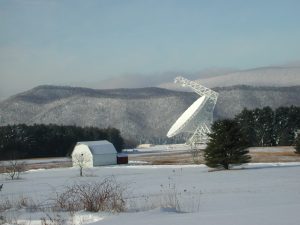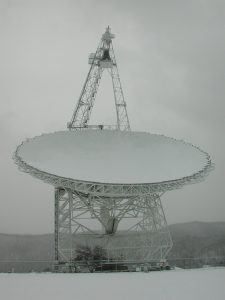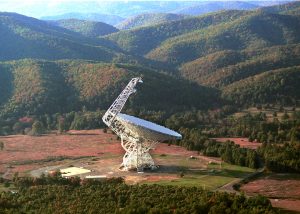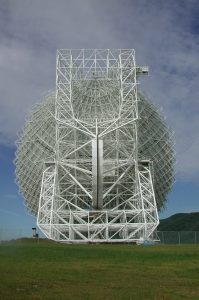Tilted like this, the 100-meter dish of the Green Bank Telescope (GBT) looks like a ski slope against the light snow.


GBT Geometry
Over 13,000 steel beams support the world’s largest fully-steerable telescope in Green Bank, West Virginia. The Green Bank Telescope weighs 17 million pounds, and moves on a rotating base and a tilting gear. The triangular-armed yoke at the base supports the tilting gear. And a gigantic pyramid arm attaches behind the dish to give it strength to tower over 200 feet above the surface.

A Dish as White as Snow
The paint on the Green Bank Telescope (GBT) is a special blend that reflects sunlight, gives off heat to keep the dish from warping, and its molecules do not give off radio waves.

Monster in its Den
The 485-foot tall Green Bank Telescope is the largest, fully-steerable telescope in the world and the largest moving object ever built on land. The GBT is kept free from radio interference within a natural fortress of mountains and by Federal and State Radio Quiet zoning.

Taking a Deep Bow
The Green Bank Telescope was designed to see 85% of the entire skies visible around the Earth. As in this photo, the GBT can dip extremely low to capture data coming from very lowest sections of the sky, especially toward the center of our Milky Way Galaxy, where the GBT has found rich, complex chemistry.

Caught in the Last Rays
The Sun sets behind the mountains that ring our Green Bank observatory site in West Virginia. However, the Green Bank Telescope’s work will continue through the night. The GBT is the world’s largest moving telescope.





